The Substance wins a BAFTA for the prosthetic make-up design worn by Demi Moore and Margaret Qualley
The Substance, directed by Coralie Fargeat and starring Demi Moore and Margaret Qualley, has won the 2025 BAFTA Award for Make-up and Hair. Here, read Wallpaper’s interview with the film’s lead prosthetic designer Pierre-Olivier Persin
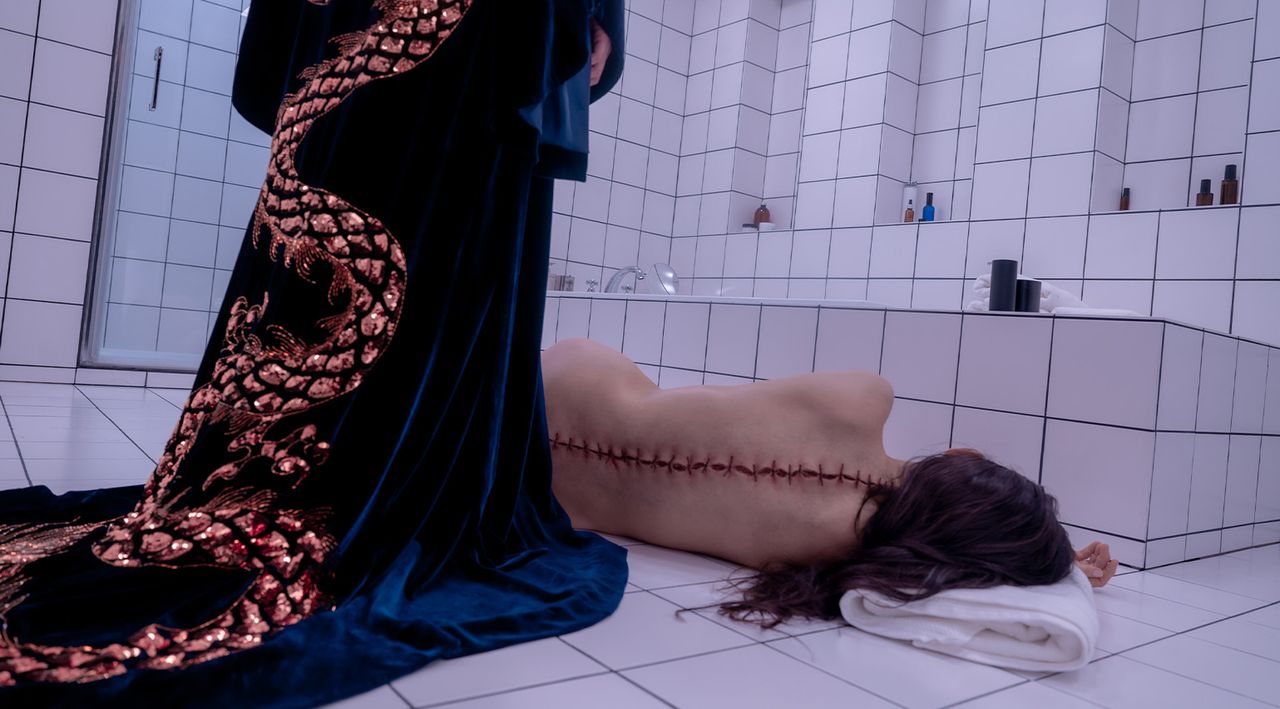
The Substance won the 2025 BAFTA award for Hair and Make-Up at last night’s ceremony (Sunday 16 February), held in the Royal Festival Hall on London’s Southbank. The team behind the film’s intricate yet grotesque prosthetics, worn by Demi Moore and co-star Margaret Qualley, was led by Pierre-Olivier Persin alongside Stéphanie Guillon and Marilyne Scarselli.
The visionary trio are also in the running for the Best Make-Up and Hair Styling at the 97th Academy Awards, which takes place on Monday 3 March. Here, The Substance is also nominated in a further four categories: Best Director, Best Original Screenplay and Best Picture for Coralie Fargeat, plus Best Actress in a Leading Role for Demi Moore, following her wins at the Golden Globes and Critics’ Choice Awards. (Moore narrowly missed out on the Best Actress BAFTA, with Mikey Madison taking home the Golden Mask trophy for Sean Baker’s Anora).
No matter what the outcome, The Substance has already secured its place in the body horror canon (although in her review for Wallpaper*, Billie Walker begged to differ) and there is little doubt that it will be discussed and analysed for years to come. While speaking to the zeitgeist of the 2020s, an era of casualised plastic surgery, ‘weight loss injections’ and FaceApp, it is also rich with references to 20th-century film and television, in a satirical and darkly comedic narration of how society’s obsession with youth and beauty got us to this point.
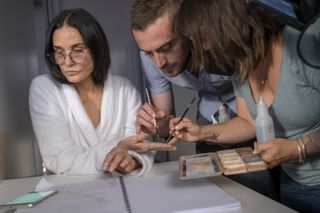
Demi Moore on the set of The Substance, where make-up designed by Pierre-Olivier Persin is applied
In the ensuing battle of body and mind between Sparkle and Sue – Elisabeth’s ‘other self’, played by Qualley, who is created via an intravenous infusion of ‘The Substance’ – there are echoes of Joan Crawford and Bette Davis in Whatever Happened to Baby Jane (Robert Aldrich, 1962). As Davis, who acted the part of Baby Jane Hudson through a smeared mask of thick stage make-up, reportedly once said herself: ‘Old age ain’t for sissies’.
Fargeat also pays homage to David Lynch’s The Elephant Man (1980) – the film which spurred the Academy to create an award category for make-up and hairstyling in 1981 – and David Cronenberg’s remake of The Fly (1986), with a predominant use of practical effects. Intent on preventing spoilers of Moore and Qualley’s transformations, the director had placed an embargo on images, preventing their circulation on the internet until Halloween last year (2024), when The Substance became available to stream on Mubi.
Soon after, the two lead actors also took to Instagram to share the arduous process of becoming characters ‘Gollum’ and ‘Monstro Elisasue’, which Pierre-Olivier Persin also discusses with Wallpaper* in the interview below.
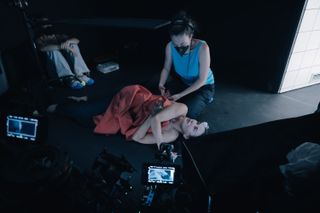
Demi Moore behind the scenes of The Substance
The Substance: an interview with prosthetic make-up artist Pierre-Olivier Persin
Wallpaper*: How long have you been working in SFX and prosthetic make-up design; how have you seen the craft change over the years?
Wallpaper* Newsletter
Receive our daily digest of inspiration, escapism and design stories from around the world direct to your inbox.
Pierre-Olivier Persin: I started in 1994 – so it’s been precisely 30 years this year. There are certainly some techniques and approaches we used to do that we don’t do anymore, or we now only use once in a blue moon. But, I would say that I have never been as busy as I am now. The consensus [in film] is that even with the current developments in technology, visual effects supervisors will try to obtain as much as they can during the principal photography. Then what we have shot can be adjusted or enhanced digitally. I think also because of the new cameras which shoot in such high definition, all practical prosthetics materials have evolved too. And so I think what we do is so much better than it was 20 or 25 years ago.
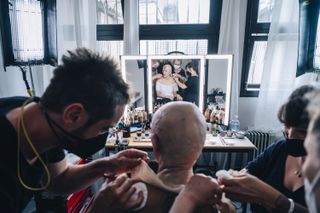
Demi Moore in the make-up chair with Pierre-Olivier Persin’s prosthetic design taking shape
W*: And what was your and Coralie Fargeat’s approach when it came to designing prosthetics for The Substance?
POP: There was a very long design process with Coralie: every element, every prosthetic, every bit of make-up, even down to the wounds, had to be designed very precisely, because the film is mostly practical effects [without digital enhancement] and also key to the storyline. And they were not quick or easy to achieve. The most challenging was creating ‘Monstro Elisasue’. Coralie wanted a ‘feminine’ monster; like an elephant but wearing ballet shoes. Something tragic and monstrous, yet graceful. So it took at least three or four months to find the right balance and a design she approved of.
Demi Moore (@demimoore) as ‘Gollum’ with prosthetic work by Pierre Olivier Persin
A photo posted by on
‘Coralie [Fargeat] wanted a ‘feminine’ monster; like an elephant but wearing ballet shoes.’
Pierre-Olivier Persin
W*: Technically speaking, what are we seeing on screen with ‘Monstro Elisasue’?
POP: Mould-making, running silicone, sculpting, painting, more moulding… This is all applied to a full latex ‘suit’ worn by the actors, with elements that can be animated. We built what were essentially sophisticated puppets that moved through mechanisms operated by hand so that Coralie could direct the sort of motion she wanted. So I would have my hand inside the head, or the back, or the tummy. And she could say to me ‘faster’ or ‘slower’. Being able to adjust this in real-time is what I think is so special about practical effects. And then you have a hood and the facial prosthetics sticking out, which are also made of silicone and glued onto the face so there is enough movement to convey emotion, too.
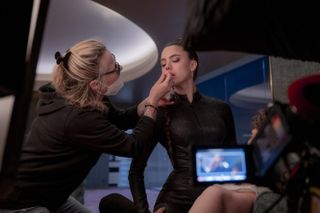
Margaret Qualley on the set of The Substance having her make-up touched up to play Sue
W*: How long did this all take to apply to Demi Moore and Margaret Qualley?
P-OP: It takes a long, long time to apply with chemicals and glues. The prosthetics are heavy and it’s hot inside – almost like being in an oven. For Margaret’s ‘Monstro Elisasue’ it was about three hours. For Demi as ‘Gollum’ – who is probably my favourite character in the film – it was much longer because everything was glued onto her from the moment she lies in the bathroom with the stitches down her back until the final form. Both were real troopers.
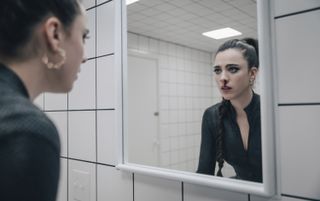
Margaret Qualley as Sue in The Substance
W*: What other films and works of art have informed your work as a prosthetic artist?
P-OP: Ah, this is like choosing between your children. There are lots I like, from classic artists such as Michelangelo, who was a master of drawing and painting anatomy, to contemporary artists, like Ron Mueck. I’ve worked with quite a few amazing British prosthetics artists; Barrie Gower and Mark Coulier are very inspiring. Mark worked on Poor Things [2023, Yorgos Lanthimos] and Priscilla [2024, Sofia Coppola]. From a make-up point of view, I’m going to say The Hunger [1983] by Tony Scott, with David Bowie and Catherine Deneuve. Also John Carpenter’s The Thing [1982].
Margaret Qualley (@isimolady) as Monstro Elisasue
A photo posted by on
‘Will I be getting more calls to work on prosthetic make-up for body horror films? I don’t know. But I’m curious to find out.’
Pierre-Olivier Persin
W*: After the success of The Substance, what is next for you project-wise?
POP: I’ve been so busy since we wrapped filming in November that I think I’m going to take a small break until next year. But I am curious to see what impact The Substance will have on film, going forward, from a cultural and audience perspective. Also from a personal perspective; will I be getting more calls to work on prosthetic make-up for body horror films? I don’t know. But I’m curious to find out.
The Substance (2024) by Coralie Fargeat is now available to stream on Mubi.
Read our film review of The Substance by Billie Walker
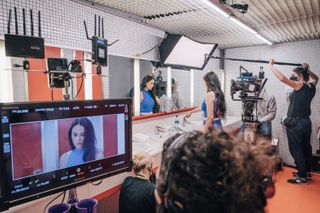
Demi Moore behind the scenes of The Substance, directed by Coralie Fargeat
Hannah Tindle is Beauty & Grooming Editor at Wallpaper*. She brings ideas to the magazine’s beauty vertical, which closely intersects with fashion, art, design, and technology.
-
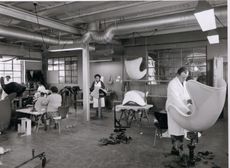 ‘Design has the power to evoke emotions, good or bad’: Fritz Hansen’s Els Van Hoorebeeck
‘Design has the power to evoke emotions, good or bad’: Fritz Hansen’s Els Van HoorebeeckWallpaper* sits down for an exclusive joint interview with Fritz Hansen’s recently appointed CEO Henrik Steensgaard and creative director Els Van Hoorebeeck
By Hugo Macdonald Published
-
 All aboard the world’s most luxurious train journeys
All aboard the world’s most luxurious train journeysStay on track with our pick of the most luxurious train journeys around the world, whether in 1920s-style opulence or contemporary chic
By Tianna Williams Published
-
 This photo book captures the ‘beauty and chaos’ behind the scenes of an Alaïa collection
This photo book captures the ‘beauty and chaos’ behind the scenes of an Alaïa collectionFor the past three years, Pieter Mulier has given photographer Anthony Seklaoui access to the Alaïa atelier, documenting the Belgian creative director’s pursuit of ‘raw beauty’ at the French house
By Jack Moss Published
-
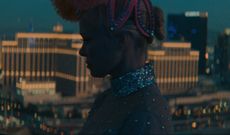 The story behind Pamela Anderson’s dazzling costumes in ‘The Last Showgirl’
The story behind Pamela Anderson’s dazzling costumes in ‘The Last Showgirl’‘The Last Showgirl’ costume designer Jacqueline Getty unpacks Pamela Anderson’s outfits in the Gia Coppola-directed movie, which are rooted in the glittering history of the Las Vegas revue
By Zoe Whitfield Published
-
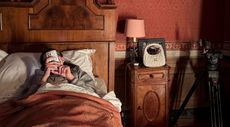 Joanna Hogg on her new film for Miu Miu and a lifelong relationship with style: ‘What we wear is very revealing’
Joanna Hogg on her new film for Miu Miu and a lifelong relationship with style: ‘What we wear is very revealing’Casting Miu Miu’s ‘Wander’ handbag in the starring role, director Joanna Hogg’s new short film is the latest chapter of the house’s Women’s Tales series. Ahead of its premiere, Simon Chilvers sits down with Hogg to find out more
By Simon Chilvers Published
-
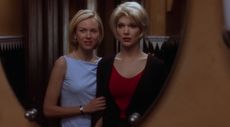 ‘Just beneath the surface there’s another world’: How David Lynch used hair and make-up to create his singular universe
‘Just beneath the surface there’s another world’: How David Lynch used hair and make-up to create his singular universeFrom Blue Velvet and Mulholland Drive to Twin Peaks, David Lynch used hair and make-up in his films as a narrative device, writes Laura Havlin
By Laura Havlin Published